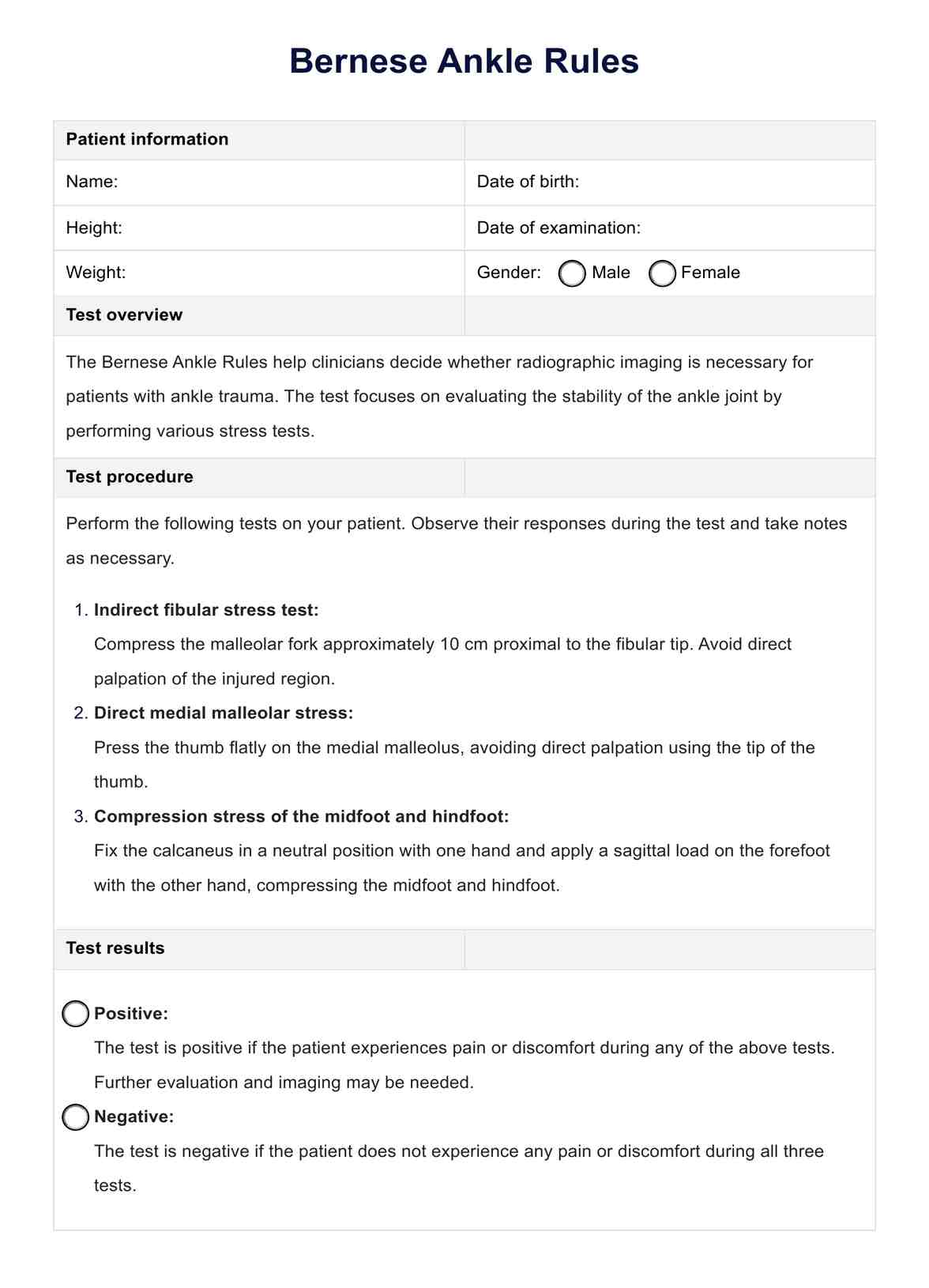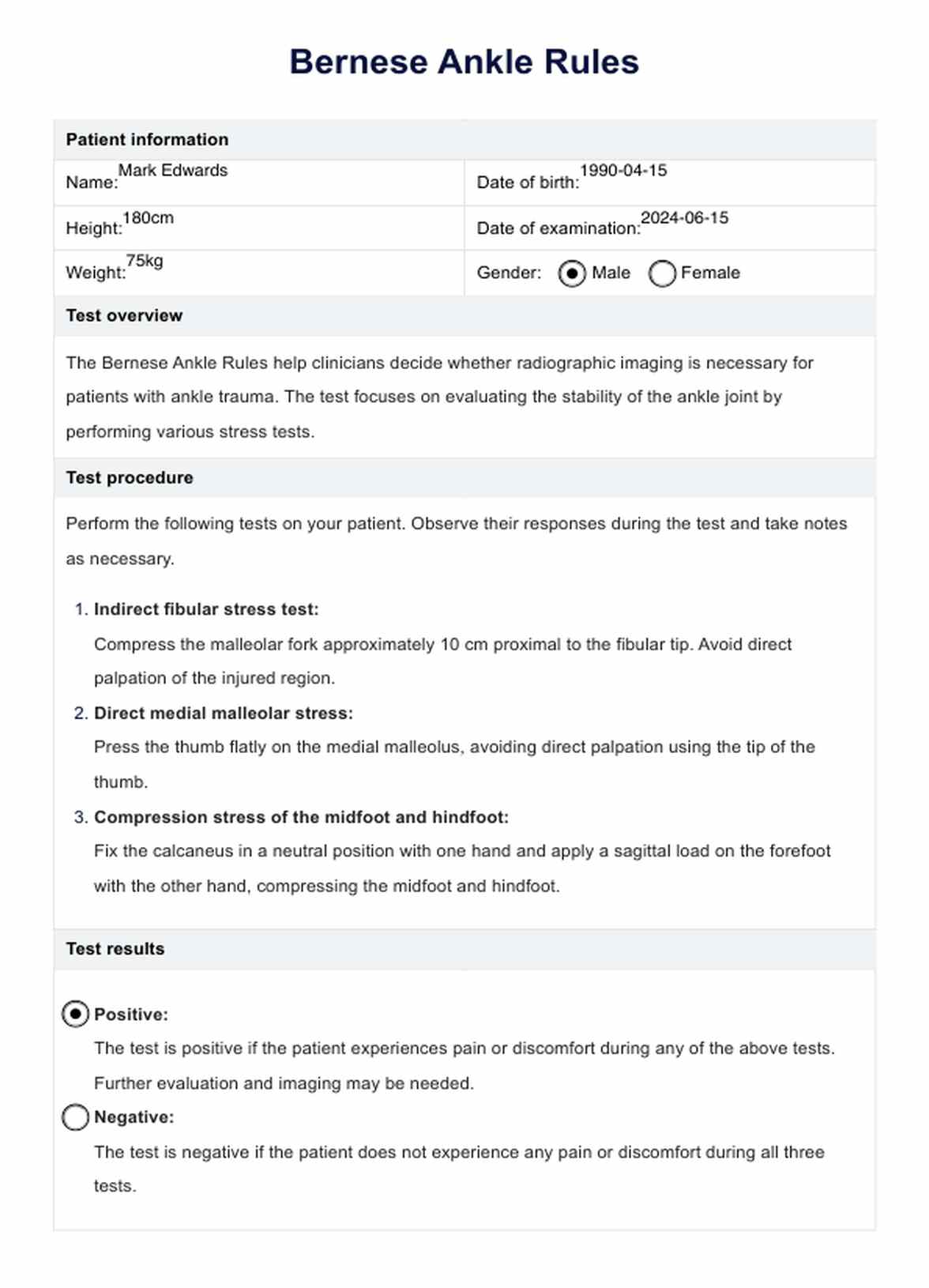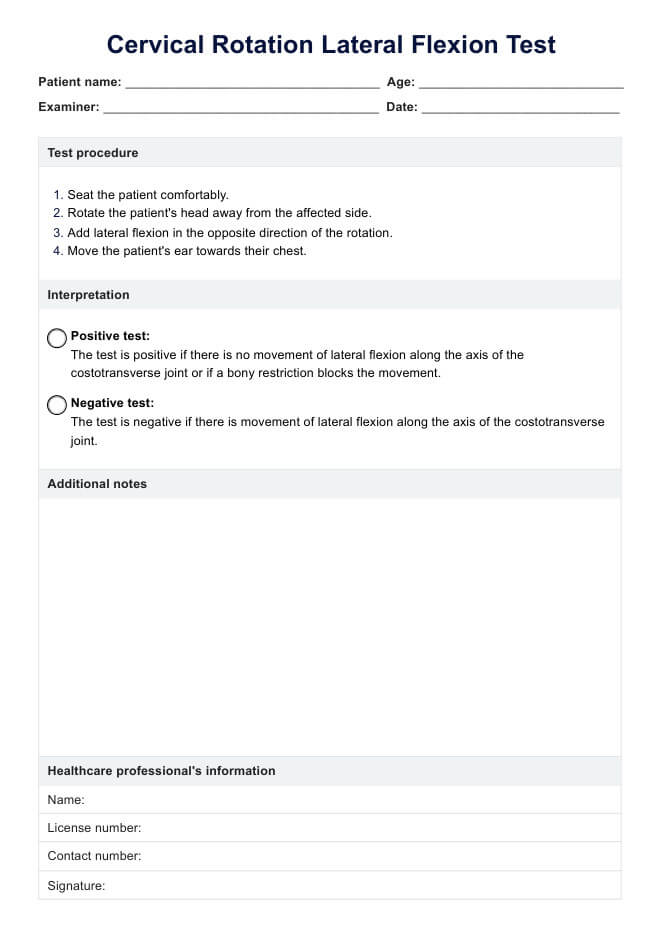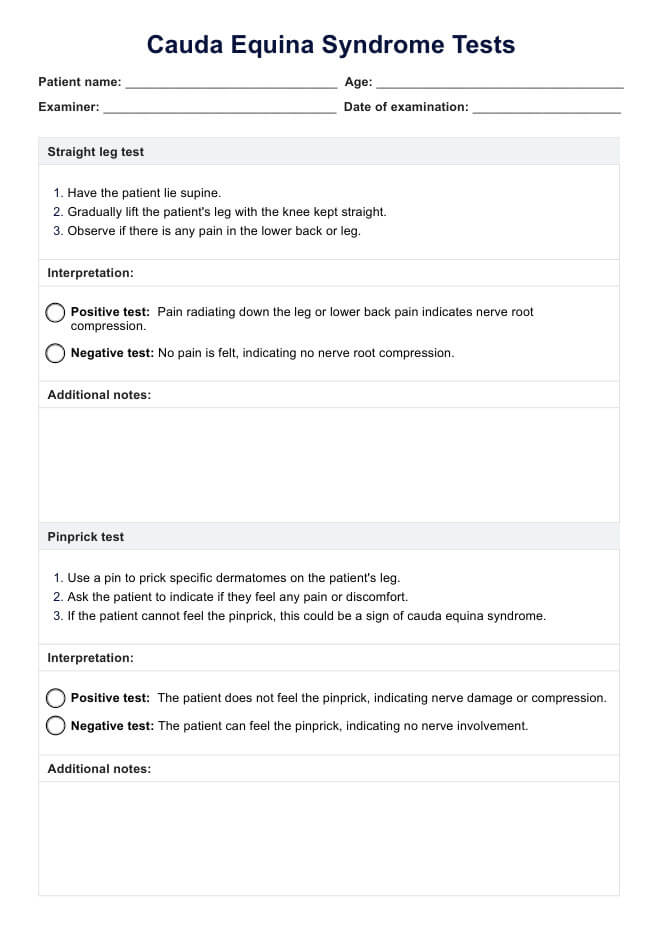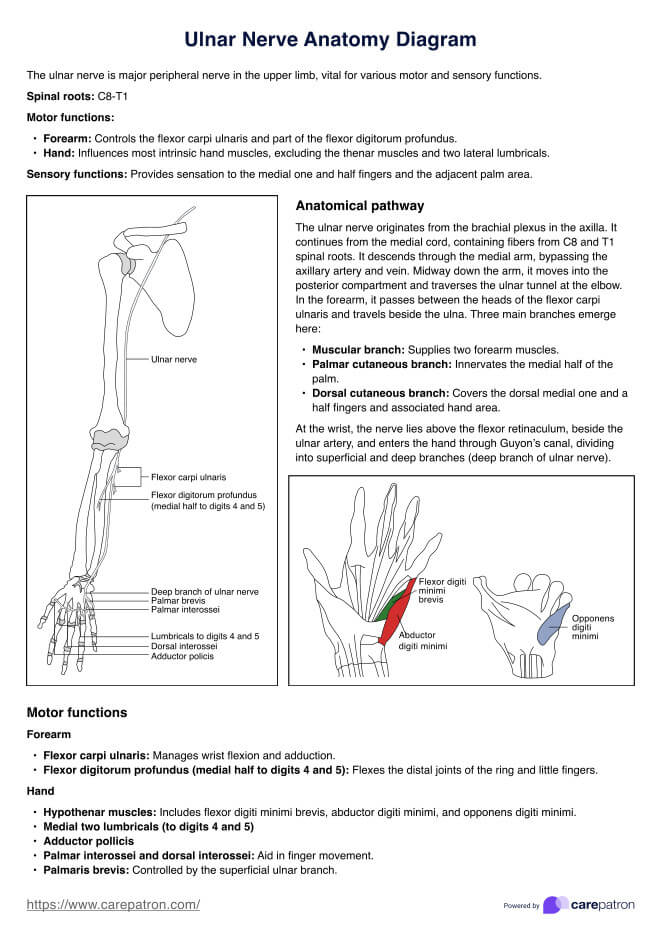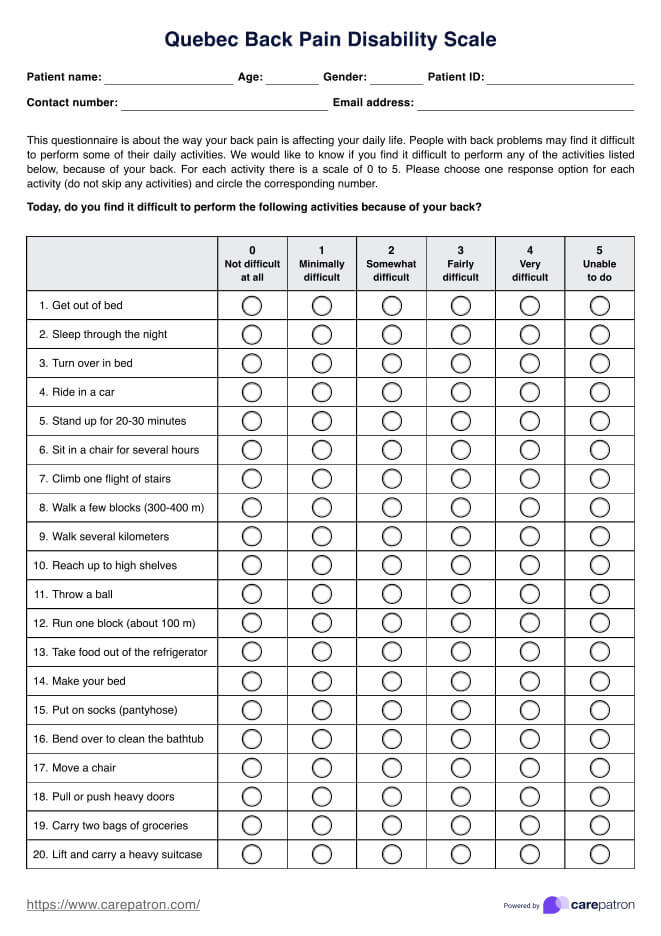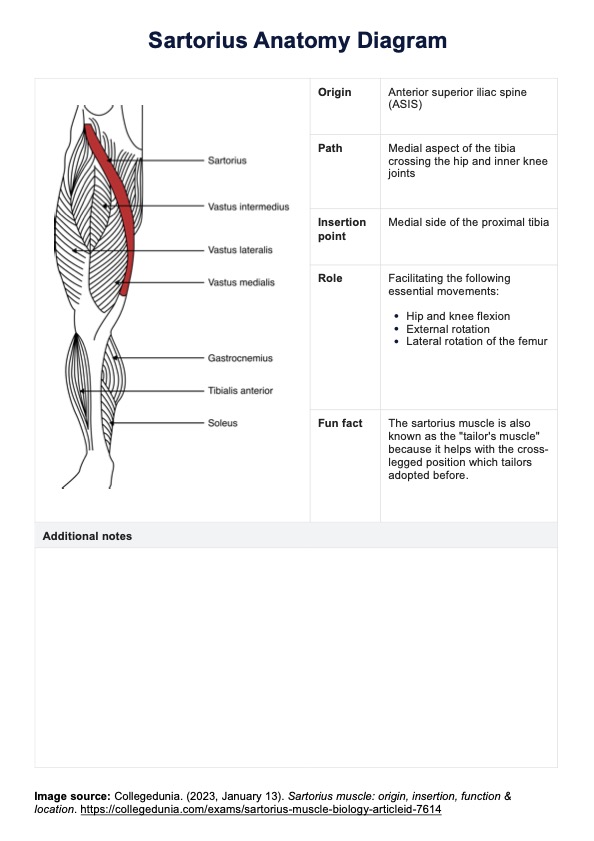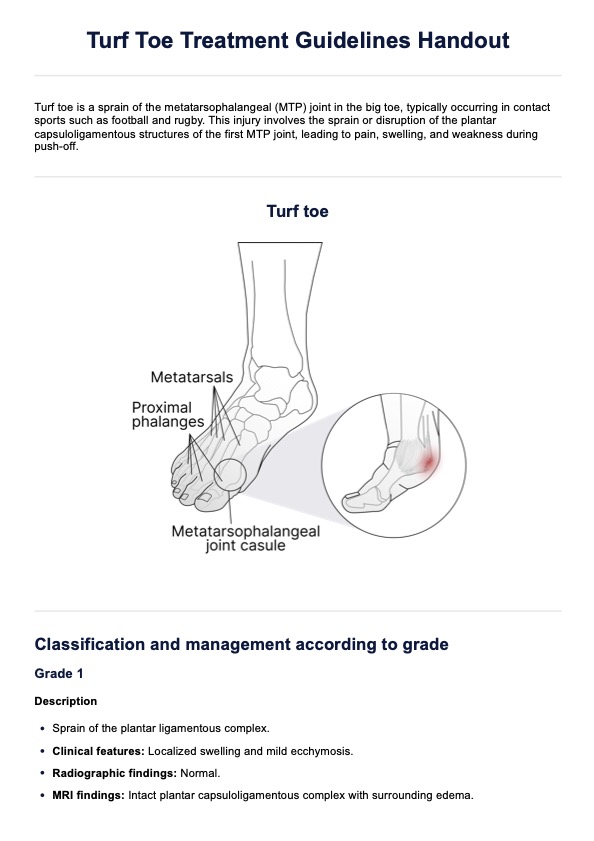Bernese Ankle Rules
Discover how to use the Bernese Ankle Rules for effective ankle injury assessment. Learn the benefits, step-by-step procedures, and treatments for accurate diagnosis and care.


What are ankle fractures?
Ankle fractures are breaks in one or more bones surrounding the ankle joint, including the tibia, fibula, and talus. They often occur due to trauma, such as a fall, sports injury, or motor vehicle accident. Symptoms of an ankle fracture include severe pain, swelling, bruising, and an inability to bear weight on the affected foot.
In some cases, there may be visible deformity or an open wound if the bone punctures the skin. Prompt medical attention is crucial to properly diagnose and treat ankle fractures to prevent complications and ensure proper healing.
Bernese Ankle Rules Template
Bernese Ankle Rules Example
What are ankle radiographs?
Ankle radiographs, commonly known as ankle X-rays, are imaging tests used to visualize the bones of the ankle joint. These radiographs help healthcare providers diagnose fractures, dislocations, and other abnormalities. During the procedure, the patient’s ankle is positioned at various angles to capture comprehensive images.
Ankle radiographs are essential for determining the extent of an injury and planning appropriate treatment, such as immobilization, surgery, or physical therapy.
What is the Bernese Ankle Rules?
The Bernese Ankle Rules (BAR) is a set of criteria used to determine the likelihood of a fracture in the ankle joint after an injury. The Bernese Ankle Rules involve performing three different stress tests on the injured ankle. These tests help to identify possible areas of fracture and can assist in determining whether further imaging or treatment is necessary:
- Indirect fibular stress test: Involves an indirect stress technique of compressing the malleolar fork approximately 10 cm proximally to the fibular tip, without directly palpating the injured region.
- Direct medial malleolar stress test: Uses a flat thumb on the medial malleolus to avoid direct palpation.
- Compression stress of midfoot and hindfoot: Requires fixing the calcaneus in a neutral position and applying a sagittal load on the forefoot to compress the midfoot and hindfoot.
If the patient has pain in any of these stress tests, it is considered a positive finding and may indicate the need for further evaluation and imaging. These rules are particularly useful in cases of low-energy supination-type malleolar and midfoot trauma.
How to use our Bernese Ankle Rules template?
The Bernese Ankle Rules template is designed to help healthcare professionals systematically assess and document potential ankle and midfoot fractures. Following the steps below, clinicians can ensure accurate evaluation and appropriate patient care.
Step 1: Fill in patient information
Start by entering the patient's name, date of birth, examination date, height, weight, and gender. This ensures all relevant information is recorded before beginning the assessment.
Step 2: Explain the test overview
Provide the patient with a brief explanation of the BAR test and its purpose. Ask the patient if they have any concerns before proceeding to the test.
Step 3: Conduct the test procedure
Follow the steps outlined in the template to conduct the procedure. Make sure to thoroughly explain each step to the patient and that they are comfortable throughout the test.
Step 4: Interpret the results
Determine if the findings are positive or negative for each part of the test. Make appropriate recommendations for further imaging or treatment based on the test results. Add any additional notes that could aid in the patient’s care plan.
Reliability of the Bernese Ankle Rules
The Bernese Ankle Rules is a clinical decision-making tool used to determine the necessity of radiographic imaging for ankle trauma. This tool helps minimize unnecessary radiographs while maintaining diagnostic accuracy. The reliability of the BAR is often measured in terms of sensitivity and specificity.
Sensitivity refers to the test's ability to correctly identify patients with fractures, while specificity refers to the test's ability to identify patients without fractures correctly. Studies have shown that the sensitivity of the Bernese Ankle Rules is approximately 55.7%, and the specificity is around 79% (Beceren et al., 2013; Physiotutors, n.d.). This indicates that the BAR is a moderately reliable test in detecting fractures, with a higher likelihood of correctly identifying patients without fractures.
The Bernese Ankle Rules are less sensitive than the Ottawa Ankle Rules (OAR), which have a sensitivity of 74.8% and a specificity of 68.6% (Beceren et al., 2013). Despite its moderate sensitivity, the BAR is still valuable in clinical practice due to its higher sensitivity and specificity both. It reduces unnecessary radiographs by accurately identifying patients who do not require further imaging.
Overall, while the Bernese Ankle Rules may not be as sensitive as the OAR, their specificity makes them valuable tools in other clinical settings. They help streamline the diagnostic process and minimize unnecessary radiographic exposure.
Treatment for ankle injuries
Treatment for ankle injuries varies depending on the severity of the injury and aims to reduce pain, promote healing, and restore function. For mild injuries, the Rest, Ice, Compression, Elevation (RICE) method is the most commonly used treatment recommended. Resting the ankle prevents further injury, while applying ice helps reduce swelling and pain. Compression with an elastic bandage can control swelling, and elevating the ankle above heart level helps reduce fluid accumulation.
For more severe injuries, additional interventions may be required. Over-the-counter pain relievers, such as ibuprofen or acetaminophen, can help manage pain and inflammation. In some cases, crutches, braces, or casts may be necessary to immobilize the ankle and allow healing. Physical therapy plays a crucial role in rehabilitation by restoring range of motion, strength, and stability through targeted exercises and balance training.
In rare cases where conservative treatments fail, surgical intervention might be needed. Surgery can repair or reconstruct damaged ligaments to restore stability and function. Post-surgery, physical therapy is essential to regain strength and flexibility. A structured rehabilitation program ensures the best possible recovery and helps prevent future injuries.
References
Beceren, G. N., Yolcu, S., Tomruk, O., Atay, T., & Baykal, Y. B. (2013). Ottawa versus Bernese: which is better? European Journal of Trauma and Emergency Surgery, 39(2), 147–150. https://doi.org/10.1007/s00068-012-0249-z
Physiotutors. (n.d.). Bernese Ankle Rules | ankle fracture assessment | fracture screening. https://www.physiotutors.com/wiki/bernese-ankle-rules/
Commonly asked questions
The Bernese Ankle Rules test helps determine the necessity of radiographic imaging in patients with ankle trauma. It aims to reduce unnecessary X-rays while ensuring that significant fractures are not missed, improving diagnostic accuracy and patient care.
The Bernese Ankle Rules involve three stress tests to identify potential fractures in an injured ankle: the indirect fibular stress test, the direct medial malleolar stress test, and the compression stress of the midfoot and hindfoot. These tests help determine the need for further imaging or treatment.
The sensitivity of the Bernese Ankle Rules test is approximately 55.7%, and the specificity is around 79%. This means it is a moderately reliable test in detecting fractures and particularly effective in identifying patients who do not need radiographs, reducing unnecessary imaging.


